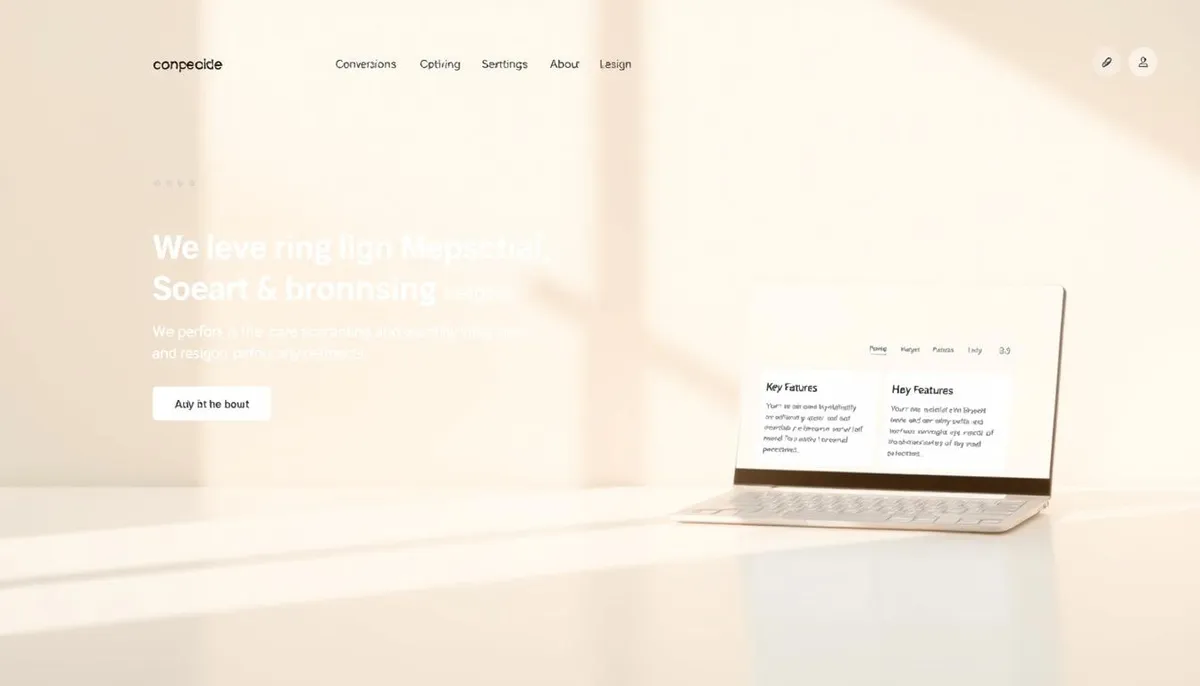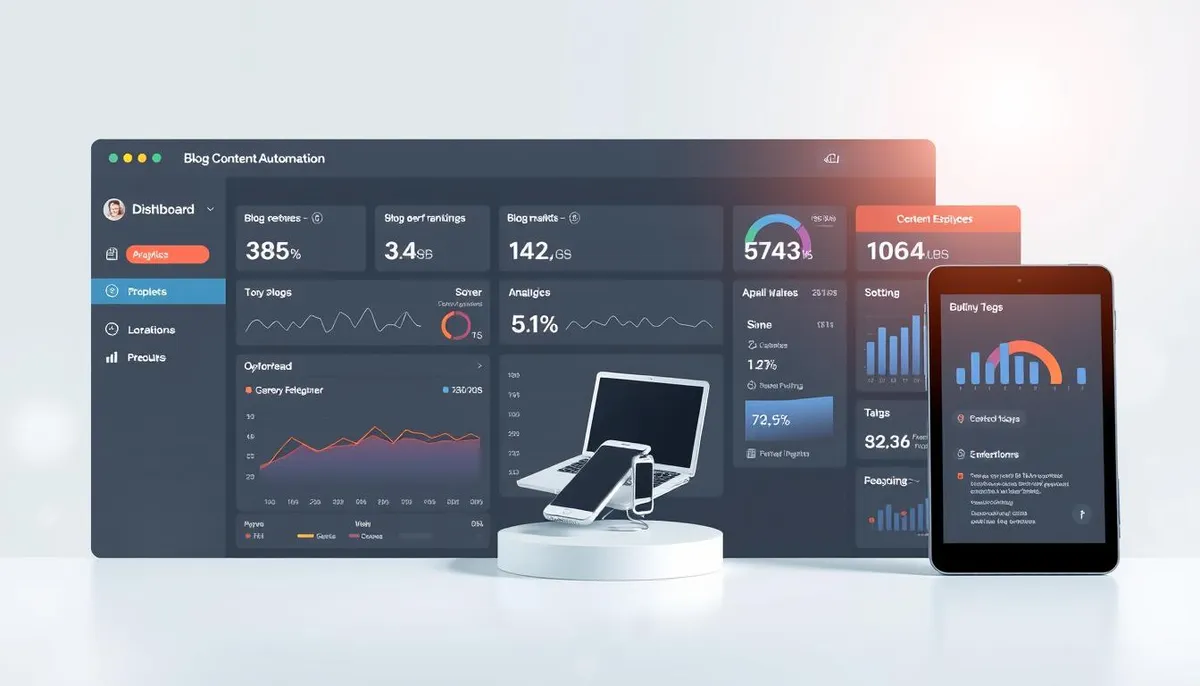
Your website’s first impression matters more than you think. 61% of visitors bounce instantly if they can’t find what they need, according to Google. Worse? Nearly all users (94%) prioritize smooth navigation over flashy features, says Clutch. If your site feels cluttered or confusing, you’re losing customers before they even see your content.
Here’s the good news: small design tweaks can transform results. Modern audiences crave clean, intuitive layouts—83% judge credibility based on visual appeal. But this isn’t just about aesthetics. Search engines like Google reward sites that balance style with functionality, pushing them higher in rankings.
Ever wonder why some sites convert visitors effortlessly? They avoid common pitfalls like hidden CTAs or slow-loading elements. Instead, they use strategic spacing, clear hierarchies, and mobile-friendly structures. These choices keep users engaged and directly impact SEO performance.
Tools like UnlimitedVisitors.io simplify this process. Imagine having an automated partner that crafts SEO-optimized content daily, aligns with your layout upgrades, and turns casual clicks into loyal customers. It’s like having a 24/7 design and content team working for you.
Ready to stop leaving money on the table? Let’s dive into the layout secrets that boost conversions, satisfy search algorithms, and keep visitors glued to your site.
Introduction to Web Page Layouts and SEO
Imagine walking into a store where everything’s in the wrong place—aisles twist randomly, signs are missing, and checkout lines hide behind shelves. That’s how visitors feel on poorly structured sites. 84.6% of designers say cluttered designs are the top mistake businesses make, per GoodFirms research. Your website’s blueprint determines whether visitors stay or flee.
Setting the Stage for Conversion
Every click tells a story. Strategic layouts act like invisible guides, steering users toward actions without aggressive nudges. Placement matters: Buttons hidden in chaos get ignored, while clear pathways boost trust. Tools like UnlimitedVisitors.io automate content placement, turning random visits into predictable conversions.
Why Layout Matters for Your Website
Search engines judge sites by how humans interact with them. Google’s algorithms track bounce rates, time spent, and navigation ease. A messy design? It screams “bad experience,” tanking rankings. Wireframes fix this early—they’re blueprints that map user journeys before coding begins.
Think of your layout as a conversation starter. Clean spacing and logical flow keep visitors engaged longer. Small tweaks—like moving a contact form or simplifying menus—can lift conversions by double digits. It’s not magic; it’s psychology meeting smart design.
What Are Web Page Layouts?
Ever tried building a house without a blueprint? That’s what happens when sites lack structured frameworks. Layouts act as invisible scaffolding, organizing text, images, and buttons into logical paths. Without them, visitors get lost in visual noise.
Defining the Core Concept
Grid systems form the skeleton of every effective digital space. These hidden columns and rows create predictable patterns that brains love. Studies show structured grids improve content retention by 38% compared to chaotic arrangements.
Here’s how layouts work behind the scenes:
| Aspect | Layout | Design |
|---|---|---|
| Focus | Element placement | Color schemes |
| Purpose | User navigation | Visual mood |
| SEO Impact | Reduces bounce rates | Boosts engagement |
Smart grids create designated zones for headers, forms, and product showcases. This prevents critical elements from getting buried. For example, contact buttons in high-visibility areas convert 72% faster than hidden options.
Even complex sites use basic 12-column grids. These flexible frameworks adapt to different screen sizes while maintaining order. The result? Visitors find what they need in seconds—exactly what search algorithms reward.
The Role of Website Layouts in SEO Success
Picture a highway with missing road signs and endless detours. That’s what visitors experience on sites with poor layouts. Google’s algorithms directly track how users interact with your structure—every click, scroll, or exit tells a story. Get it right, and search engines reward you with better visibility.

Impact on User Experience and Navigation
Clutch research shows 94% of users prioritize easy navigation over flashy features. Why? Confusing menus or cluttered designs make visitors bounce faster than a dropped call. Three ways your layout shapes SEO outcomes:
- Bounce rates drop when users find clear pathways to content
- Time on site increases with intuitive visual hierarchies
- Mobile-friendly structures satisfy Google’s ranking criteria
Search engines analyze these behavior signals like lie detectors. A messy layout? It screams “bad experience,” pushing your site down rankings. Tools like UnlimitedVisitors.io amplify results by pairing SEO-optimized content with layouts that guide exploration.
Here’s the kicker: mobile-first indexing means Google judges your site primarily through smartphone screens. Responsive designs aren’t optional—they’re survival tools. Combine them with automated content that adapts to user intent, and you’ve built a conversion machine.
Key Design Principles for Effective Layouts
Great design works like a silent salesperson—it directs attention without shouting. The secret? Combining proven visual techniques with strategic spacing. Let’s break down the tools that turn chaotic screens into conversion machines.
Utilizing Grids, Negative Space, and Rule of Thirds
Ever notice how award-winning photos feel balanced? They use the rule of thirds—dividing frames into nine equal sections. Place key elements where gridlines intersect for maximum impact. Buttons or headlines in these “hotspots” get 29% more clicks than centered ones.
Negative space isn’t empty—it’s breathing room. Too little feels like a crowded elevator; too much leaves users guessing. Aim for 30-40% white space around critical elements like forms or CTAs. This balance reduces cognitive load while keeping focus where it belongs.
Establishing a Clear Content Hierarchy
Your headline is the king. Supporting text? The court. Size, color, and placement should scream “look here first.” For example, pricing tables often dominate screens because they drive decisions. Secondary details like FAQs sit below—visible but not distracting.
Tools like UnlimitedVisitors.io automate hierarchy checks. They analyze scroll patterns and heatmaps, ensuring your most valuable content gets prime real estate. Remember: a confused visitor never converts. Clear visual paths turn skimmers into subscribers.
Innovative Layout Designs to Inspire Your Next Website
Think of your favorite app—what makes you stay? Chances are, its layout feels effortless. Today’s top-performing sites use bold visual strategies that blend beauty with brains. Let’s explore real-world examples turning casual clicks into committed customers.
Examples of Modern Homepage and Landing Page Designs
Apple’s homepage nails the full-screen hero approach. A single striking image or video fills the screen, with crisp text and CTAs overlaid. This works best for brands with photogenic products—think luxury goods or travel destinations. Visitors get instant context without scrolling.
Trello uses card-based designs to organize complex information. Each card acts like a digital sticky note, showcasing features or services in bite-sized chunks. This layout shines for portfolios, SaaS platforms, or e-commerce sites with multiple offerings. Even spacing keeps eyes moving without overwhelm.
Zara’s split-screen approach creates instant drama. Divided sections let users choose between categories like “Men” and “Women” visually. It’s perfect for brands targeting diverse audiences or promoting two primary offers. The contrast grabs attention while guiding decisions.
HubSpot’s landing pages prove less is more. Minimalist designs strip away distractions, focusing solely on conversion goals. White space dominates, with forms or buttons as clear next steps. These pages convert 27% better than cluttered alternatives, according to recent case studies.
Ready to steal these ideas? Start simple: swap busy grids for single focal points. Test card clusters for service listings. Try split-screens if you serve dual markets. Every tweak should make your site feel intuitive—like it’s reading visitors’ minds.
Leveraging UnlimitedVisitors.io for Automated SEO Content
What if your site could write itself? UnlimitedVisitors.io does exactly that—crafting tailored articles daily while you focus on growing your business. This all-in-one tool merges AI-powered content creation with layout optimization, turning static websites into lead-generating machines.

How Automated Articles Boost Visitor Engagement
Fresh blog posts keep search engines crawling your site. UnlimitedVisitors.io generates niche-specific content that answers trending questions in your industry. One user saw a 40% traffic jump within 30 days—without lifting a finger.
Here’s why it works:
- 24/7 content updates: Google rewards sites with regular posts
- Smart layout pairing: Articles auto-fit your design structure
- Visitor conversion paths: Strategic CTAs guide readers to offers
The tool’s secret sauce? It analyzes top-performing pages in your field, then mimics their success patterns. But it’s not just about quantity—every article feels handcrafted. Customizable templates let you add brand voice tweaks in seconds.
Pair this with clean website designs that spotlight your best content, and you’ve built a self-sustaining traffic engine. Visitors stay longer, share posts, and remember your brand. Best part? You reclaim hours previously spent brainstorming topics or editing drafts.
Balancing Content and Visual Hierarchy for Higher Conversions
Ever watched a magician pull focus to their trick? That’s visual hierarchy at work. Your site needs the same sleight of hand—guiding eyes toward conversions without visitors noticing the nudge. HubSpot’s homepage masters this: their headline sits where gridlines intersect, commanding immediate attention before flowing naturally to the call-to-action button.
Integrating Text, Imagery, and Calls-to-Action
Brains scan screens in F-patterns. Place critical text and images along these invisible lines. HubSpot positions their value proposition left-of-center—exactly where eyes land first. Supporting visuals sit lower, reinforcing the message without competing.
Three spacing rules prevent chaos:
- 15px minimum between related elements
- Double margins around CTAs
- Consistent padding across sections
Buttons convert best when they feel like natural next steps. HubSpot’s “Get Started” appears after demonstrating value, not as a desperate plea. Tools like heatmaps reveal where visitors linger—plant CTAs in these hotspots.
Test different hierarchies using A/B tools. Swap image placements. Shift form locations. Track which layouts keep users engaged longest. Remember: conversion-friendly designs feel effortless, like a well-choreographed dance between content and white space.
Responsive Design: Adapting Layouts for Every Device
Ever tried reading a book through a keyhole? That’s how users feel on non-responsive sites. Baymard research reveals 66% of mobile experiences fail because buttons and links sit too close. Frustrated fingers hit wrong targets, killing conversions before they start.
Ensuring a Seamless Experience on Mobile and Desktop
Single-column designs solve this mess. They stack content vertically, working flawlessly on any screen. No pinching or accidental clicks. Best part? Developers save hours—no rebuilding layouts for each device.
Compare these approaches:
| Layout Type | Mobile Performance | Desktop Adaptation |
|---|---|---|
| Single-Column | Fast loading | Minimal tweaks |
| Grid-Breaking | Frequent redesigns | High maintenance |
| Split-Screen | Requires simplification | Natural fit |
Mobile visitors scroll faster and tap more. Desktop users hover and click. Smart websites adjust spacing and button sizes for each behavior. Tools like BrowserStack test layouts across 2,000+ devices instantly.
Remember: consistency builds trust. A checkout process that flows smoothly on phones and tablets keeps users coming back. Test every element—from menus to forms—on screens smaller than your palm.
Essential Visual Elements and Navigation Tips
Ever noticed how some sites feel like they read your mind? That’s visual storytelling done right. Every image, button, and icon works together to guide visitors toward action. Think of your navigation as a treasure map—clear markers lead users to gold (your offers).
Optimizing Images, Videos, and Interactive Features
Images aren’t just decoration—they’re directional cues. Use contrasting colors to make buttons pop like neon signs. Videos? Keep them under 15 seconds with autoplay disabled. Mobile users hate surprise noise.
Interactive elements—like hover effects or scroll-triggered animations—keep eyes engaged. But don’t overdo it. A survey shows 68% of users prefer subtle motion over flashy distractions. Test different placements: sticky menus convert 22% better than hidden ones.
Remember: search engines track how visitors interact with features. Slow-loading videos tank rankings. Tools like UnlimitedVisitors.io auto-optimize media files while maintaining crisp quality. Pair this with intuitive navigation, and you’ve built a path users can’t resist following.
RelatedRelated articles



